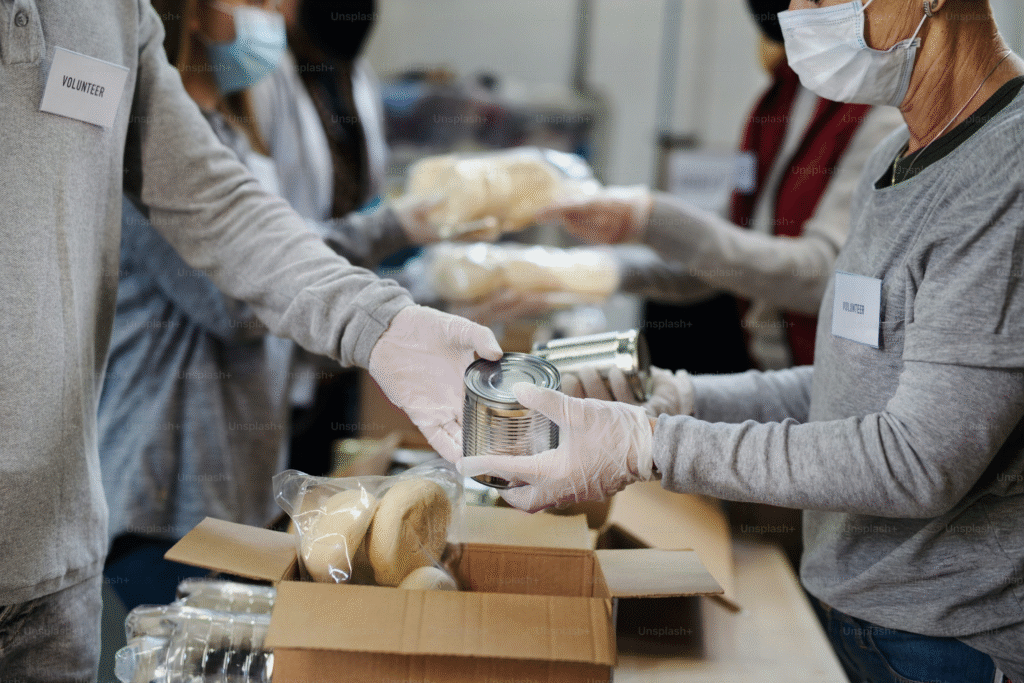The sound of moving boxes and clinking cans fills the large warehouse of the Food Bank of the Rockies in Denver, Colorado. Volunteers work tirelessly, forming long lines to pack food boxes for people who have nowhere else to turn. But behind their smiles and determination lies a serious worry — what happens if millions of Americans suddenly stop receiving their government food benefits?
Across the United States, food banks are bracing themselves for an overwhelming wave of people seeking help. The ongoing U.S. government shutdown has left Congress unable to fund food assistance programs for November, and this could leave millions of families without access to essential benefits that help them buy groceries.
At the center of this growing crisis is Cynthia Kirkhart, the CEO of the Facing Hunger Foodbank in Huntington, West Virginia. Her food bank serves not only West Virginia but also parts of Kentucky and Ohio. This year, she has already had to make heartbreaking decisions — like explaining to families why they can no longer get as many potatoes or bags of rice as before. Rising food prices and an increase in hungry families have stretched her organization to its limit.
“You remove SNAP dollars, and people have no resources. We’re in some real trouble,” Kirkhart said. Her concern is shared by many others across the country who are watching the situation unfold with growing fear.

The shutdown, now one of the longest in U.S. history, has frozen essential government operations, including the funding for the Supplemental Nutrition Assistance Program (SNAP), commonly known as food stamps. This program provides help to more than 41 million Americans each month. Another 7 million women and children rely on the WIC program, which offers support to mothers and infants. If these benefits stop in November, millions could face empty refrigerators and food bank shelves that can’t keep up.
Food banks are already struggling with limited resources. Even before the shutdown, many were seeing more people coming through their doors than ever before. The combination of higher food prices, job losses, and reduced federal support has made it harder for families to afford meals. In several states, food banks say they’re nearly running out of supplies and funding.
In West Virginia alone, nearly 300,000 people could lose their SNAP benefits next month. For Kirkhart and her team, that’s a frightening number. “We’re talking about entire communities,” she explained. “Families with children, the elderly, people with disabilities — all depending on that monthly help to survive.”
The United States has seen hunger rise steadily over the past few years. Food insecurity — the lack of consistent access to enough food — has become a national problem. Many families who once got by on low wages now find themselves visiting food pantries for the first time.
The situation has also been made worse by policy changes. The administration of President Donald Trump has reduced certain federal funds meant for food banks and tightened the rules for receiving SNAP benefits. Stricter work requirements have made it more difficult for some unemployed or part-time workers to qualify.
While the government shutdown drags on, food banks across eight states told Reuters that they are preparing for a flood of new visitors if benefits are cut off. Some are already setting up emergency response plans, but most admit they don’t have the resources to meet such an enormous need.
Many food banks rely heavily on donations — both money and groceries — from individuals, grocery stores, and local businesses. However, these donations have not kept pace with the growing demand. The cost of food has gone up sharply, meaning every dollar buys less than it used to. Fuel costs for transporting supplies have also increased, and volunteer numbers are thinning because many people can’t afford to take time off work.
At the Food Bank of the Rockies in Denver, volunteers continue packing boxes with rice, pasta, and canned vegetables. But organizers say they are deeply worried. “We’re doing everything we can,” said one volunteer. “But if SNAP stops, there’s no way we can fill that gap completely.”
The shutdown’s effects are not just about food — they ripple through entire communities. When families lose SNAP benefits, they not only struggle to eat, but they also spend less money in local grocery stores, small businesses, and markets. This hurts the local economy, leading to even more job losses and instability.
In cities like Chicago, Washington, and Denver, food banks have started reaching out to churches, community centers, and schools to coordinate extra support. Still, everyone agrees that charity alone cannot replace federal food aid programs. “We’re already at capacity,” one organizer said. “If the shutdown continues, we’ll be overwhelmed.”
Hunger in America has often been called a “silent crisis.” It doesn’t always make headlines, but its impact is visible in every town — from children struggling to focus in school because they skipped breakfast to seniors choosing between food and medicine. The current government shutdown threatens to make this crisis worse than it’s been in years.
Experts warn that if Congress does not act soon, food insecurity could rise sharply, and families who were already on the edge might slip into deeper poverty. The strain on food banks could take months, even years, to recover from.
Still, amid all this uncertainty, there is a sense of unity and compassion. Volunteers continue to show up every day, often working long hours to make sure no one goes hungry. Community members are donating what they can — even small bags of rice or cans of soup — to help others. “We can’t control what happens in Washington,” Kirkhart said, “but we can take care of each other here at home.”
Her words capture the spirit of countless Americans who believe that kindness and cooperation can make a difference, even in hard times. But as the days of the shutdown stretch on, the question remains: how long can food banks keep up before their shelves run empty?
The crisis has shown once again how deeply many Americans rely on federal support to meet basic needs. Without programs like SNAP, millions could go hungry — not because they don’t want to work or help themselves, but because life has simply become too expensive.
As night falls in Denver, the volunteers at the Food Bank of the Rockies keep working. The warehouse lights shine on rows of packed boxes, ready to be delivered to families in need. For now, they have enough food to last a few more weeks. But unless the government finds a way to end the shutdown and restore benefits soon, even the most dedicated volunteers may find themselves facing an impossible choice — who gets to eat, and who must wait.


